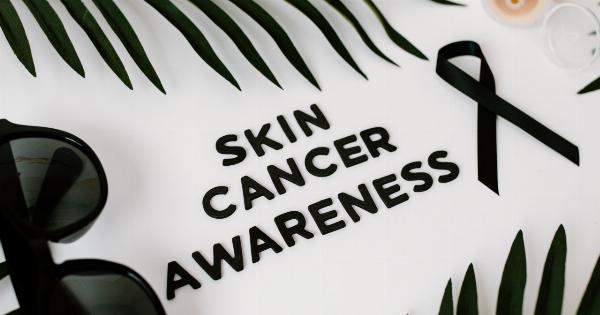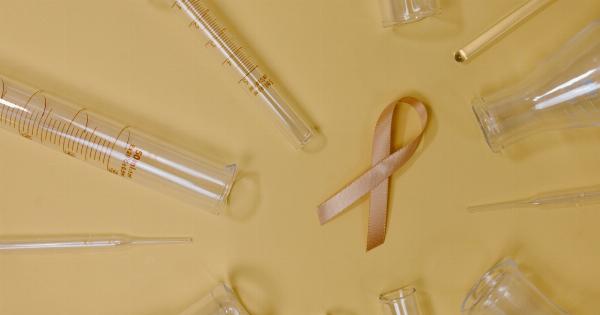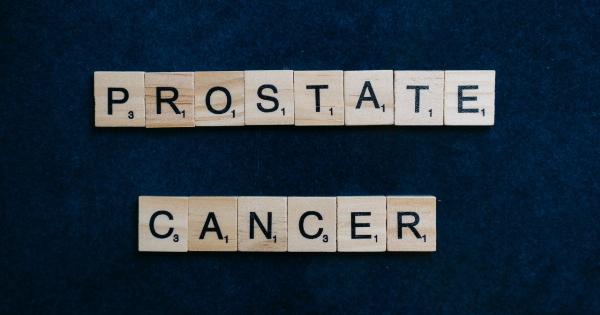Skin cancer is one of the most common types of cancer that affects millions of people around the world. It occurs when abnormal cells in the skin start to grow uncontrollably, resulting in the formation of a tumor.
While skin cancer is often caused by exposure to ultraviolet (UV) radiation from the sun, it can also develop due to other factors such as genetics, certain medications, and exposure to certain chemicals.
The Different Types of Skin Cancer
There are three main types of skin cancer: basal cell carcinoma (BCC), squamous cell carcinoma (SCC), and melanoma.
Basal Cell Carcinoma (BCC)
BCC is the most common type of skin cancer. It typically appears as a small, raised bump that may be pearly or waxy in texture. BCC usually develops on areas of the skin that are frequently exposed to the sun, such as the face, neck, and hands.
While it rarely spreads to other parts of the body, if left untreated, it can invade nearby tissues and cause extensive damage.
Squamous Cell Carcinoma (SCC)
SCC is the second most common type of skin cancer. It often develops on areas of the skin that have been damaged by the sun, such as the face, ears, lips, and hands. SCC may appear as a scaly patch, a red firm bump, or a sore that doesn’t heal.
Although it is usually not life-threatening, SCC can spread to other parts of the body if left untreated.
Melanoma
Unlike BCC and SCC, melanoma is a more aggressive type of skin cancer that can metastasize and spread to distant organs. It typically develops from abnormal moles or pigmented skin.
Melanoma can appear as a new mole or an existing mole that changes in size, shape, or color. Early detection and treatment are crucial for the successful management of melanoma.
Risk Factors for Skin Cancer
Several risk factors increase the likelihood of developing skin cancer:.
Exposure to Ultraviolet (UV) Radiation
Excessive exposure to UV radiation, whether from the sun or tanning beds, is the leading cause of skin cancer. UV radiation damages the DNA in skin cells, leading to mutations and the development of cancer.
Fair-skinned individuals, people with a history of sunburns, and those who spend long hours outdoors are at a higher risk.
Family History
Having a family history of skin cancer increases the risk of developing the disease. Certain inherited gene mutations, such as the BRCA gene, are associated with an increased susceptibility to skin cancer.
Personal History of Skin Cancer
If you have previously had skin cancer, you are at an increased risk of developing another skin cancer. It’s crucial to regularly monitor your skin and seek medical attention if you notice any changes or suspicious growths.
Weakened Immune System
Individuals with a weakened immune system, whether due to certain medical conditions or immunosuppressive medications, have a higher risk of developing skin cancer.
The immune system plays a crucial role in identifying and eliminating cancer cells, so a compromised immune system may allow cancer to develop more easily.
Chemical Exposures
Exposure to certain chemicals, such as arsenic, coal tar, and certain industrial chemicals, can increase the risk of developing skin cancer. Occupational exposure to these substances should be minimized and proper safety measures should be followed.
Preventing Skin Cancer
While certain risk factors, such as family history and genetic predisposition, cannot be controlled, there are several steps you can take to reduce your risk of developing skin cancer:.
Limit Sun Exposure
Avoid spending long hours in the sun, especially during peak hours when the sun’s UV rays are the strongest (usually between 10 am and 4 pm).
Seek shade whenever possible and wear protective clothing, such as wide-brimmed hats, long sleeves, and sunglasses. Don’t forget to apply sunscreen generously to all exposed skin.
Use Sunscreen
Apply a broad-spectrum sunscreen with an SPF (Sun Protection Factor) of 30 or higher before going outside. Reapply every two hours, or more frequently if sweating or swimming.
Remember to cover all exposed areas, including the face, neck, ears, and hands.
Perform Regular Skin Self-Exams
Regularly examine your skin from head to toe, checking for any new growths, changes in moles, or any other suspicious areas.
Pay attention to the ABCDE rule when evaluating moles: asymmetry, border irregularity, color variation, diameter larger than a pencil eraser, and evolving appearance.
Seek Professional Skin Checks
Visit a dermatologist annually, or more frequently if you have a higher risk of skin cancer. A dermatologist can perform a thorough skin examination, identify suspicious growths, and recommend appropriate treatment if necessary.
Treatment Options for Skin Cancer
The treatment options for skin cancer depend on the type, size, location, and stage of the cancer. The most common treatment methods include:.
Surgical Excision
During a surgical excision, the cancerous lesion and a surrounding margin of healthy tissue are removed. This ensures that all cancer cells are eliminated and reduces the risk of recurrence.
Cryosurgery
Cryosurgery involves freezing the cancer cells with liquid nitrogen, causing them to die and be shed off. This method is often used for superficial skin cancers.
Topical Medications
Topical medications, such as creams and ointments, can be prescribed for certain types of skin cancer. These medications work by targeting and killing the cancer cells.
Radiation Therapy
Radiation therapy uses high-energy radiation beams to destroy cancer cells. It is often used as a treatment option for older adults and for cases where surgery is not possible.
Chemotherapy
Chemotherapy involves the use of drugs to kill cancer cells. It can be administered orally, topically, or through injections, depending on the specific case.
Conclusion
Skin cancer is a prevalent and potentially life-threatening disease.
By understanding the different types of skin cancer, recognizing the risk factors, and taking proactive steps to prevent it, you can significantly reduce your chances of being caught off guard by this condition. Regular self-examinations, professional skin checks, and early detection are paramount for successful treatment and improved outcomes.
Remember to protect your skin from the sun, stay informed about potential risk factors, and seek timely medical attention if you notice any abnormalities or changes in your skin.


























